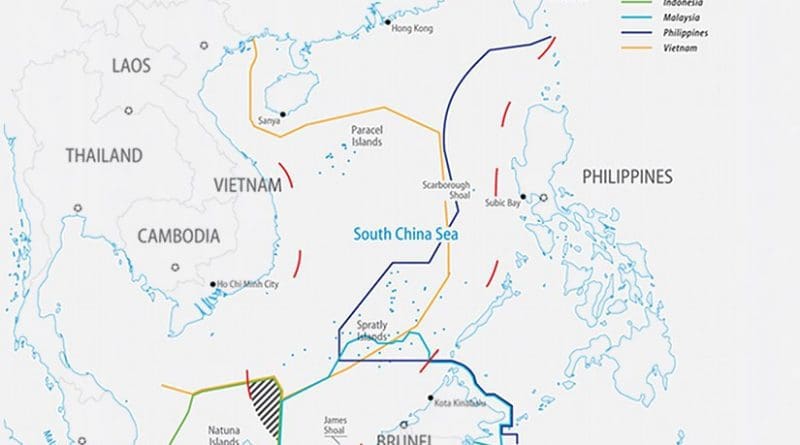Getting Tougher: Vietnam’s Response To China’s South China Sea Bases – Analysis
By Published by the Foreign Policy Research Institute
By Felix K. Chang*
(FPRI) — Over the last few months, Vietnam has quietly deployed the components of several Extended Range Artillery (EXTRA) rocket systems to five of the islands that it occupies in the Spratly archipelago, according to Western officials. If true, Vietnam likely did so in response to China’s construction of military facilities on the islands that it controls across the region. Vietnam has reportedly dispersed and camouflaged the EXTRA rocket systems, but can arm them within days.[1] While Vietnam currently lacks the real-time surveillance and reconnaissance needed for the systems to target ships at sea, they can put at risk China’s island bases. With a maximum range of 150 km and an accuracy of within 10 meters, they could render inoperable many of China’s newly built airfields.
Vietnam is not a country known to shrink from a challenge, even when the odds are stacked against it. So far, that has been the case in the South China Sea where the growth of China’s naval might and its determination to assert sovereignty over the region have made the odds of successfully resisting it increasingly steep. Hanoi is doing what it can. It has lavishly spent on new Kilo-class submarines and Gephard-class frigates from Russia. It has accepted Japanese help to build a more robust coast guard. It has even strengthened its military ties with the Philippines, despite its concerns over Manila’s commitment and strength. (Indeed, the Philippines’ new president, Rodrigo Duterte, has eased the confrontational approach of his predecessor by offering to open talks with China based on the recent arbitration court ruling.)
Vietnam’s military buildup in the South China Sea may prompt China to take further steps to strengthen its hold on the region. China is not taking any chances. It is already building reinforced concrete shelters to protect aircraft on its island airfields.[2] Earlier this summer, the Chinese air force began to send its fighters and bombers on “combat patrols” over the region.[3] All the while, China has continued its efforts to squeeze out the Philippines and Vietnam from the islands they hold by interdicting the resupply of their garrisons.
Still, the hardening of defenses on Philippine and Vietnamese-held islands is bound to make further Chinese attempts to seize new territory more difficult. The ease with which China occupied Scarborough Shoal in 2012 is less likely to be repeated. The only remaining island features in the region that now seem vulnerable are those of Malaysia, like James Shoal.
The arms buildup on the islands of the South China Sea may seem alarming. But the mere presence of more arms does not mean that conflict is inevitable. It does mean that if a conflict does occur, it could rapidly spiral. Given the strategic vulnerability of the islands involved, the deployment of offensive weapon systems, like rocket systems, may present commanders with a use-or-lose choice during a crisis. That would indeed be disturbing.
About the author:
*Felix K. Chang is a senior fellow at the Foreign Policy Research Institute. He is also the Chief Strategy Officer of DecisionQ, a predictive analytics company in the national security and healthcare industries. He has worked with a number of digital, consumer services, and renewable energy entrepreneurs for years.
Source:
This article was published by FPRI.
Notes:
[1] Greg Torode, “Exclusive: Vietnam moves new rocket launchers into disputed South China Sea – sources,” Reuters, Aug. 10, 2016.
[2] Eric Beech, Idrees Ali, and Michael Martina, “Photos suggest China built reinforced hangars on disputed islands: CSIS,” Reuters, Aug. 11, 2016.
[3] Michael Martina, “China conducts ‘combat patrols’ over contested islands,” Reuters, Aug. 6, 2016.

